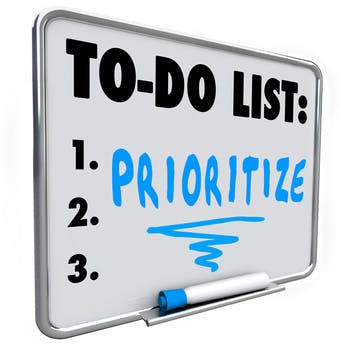“Action expresses priorities.” — Mahatma Gandhi
As Scottish poet Robert Burns pointed out in his poem To a Mouse in 1785,
The best-laid schemes o’ mice an’ men
Gang aft agley,
An’ lea’e us nought but grief an’ pain,
For promis’d joy!”
In other words, no matter how carefully you plan, things still go wrong.
Finding a way to move ahead
Among the most important schemes of the modern office worker, and therefore those most likely to “gang agley,” are our priorities.
Most of us compile exhaustive to-do lists and make serious efforts to triage our schedules, but sometimes priorities collide in ways we don’t expect. A specific project may come due earlier or later than expected, conflicting with existing priorities; an emergency request may also raise its ugly head, or a superior might reshuffle team schedules without everyone’s input.
Worse are the managers who pile your plate high, and when you ask what’s most important, they reply, “it’s all important!” then expect you to do everything first.
In such cases, you have no choice but to find a loophole so you can move forward.
Give me your answer
Although you can always flip a coin when faced with conflicting priorities, you’d better save that for a last resort. Instead, try these tips first:
- Ask your manager to prioritize. Politely point out everything can’t be Priority No. 1, since you’re just one person, and ask her to prioritize your tasks. If she hems and haws, ask her which one she wants you to miss the deadline on first. She may realize she’s being unreasonable, and give you a priority order to work from instead.
- Seek help. Try to recruit help from others on your team, delegating some of your high-priority items to them if possible. If not, ask your supervisor to reassign some of your existing priorities. This might annoy her, especially if she has to hire a temp or two, but better that than let the entire house of cards come tumbling down because of her bad planning.
- Do the task due soonest first. If your manager remains unreasonable, or outside circumstances have jammed two or more top-priority projects into your schedule unexpectedly, prioritize them by deadline. Most projects or tasks have a due date. Select the one due soonest, and push hard to get it done on time. This becomes especially important when an emergency pops up. If, for example, a co-worker is hospitalized and unable to make that important presentation tomorrow, you may have to step in as an understudy, no matter how deeply you’ve dedicated yourself to something else. Part of your job is to solve problems.
- Prioritize the most beneficial project. If two projects come due on the same day and your supervisor won’t make a choice, consider their relevant value. Let’s say one earns the company $1 million, while the other nets ten bucks (silly example), but if you can handle only one, the choice is clear — even when your supervisor wants both. The point is to think about what results from completing the task.
- Fix the urgent over the important. Urgent projects trump the merely important. If you’re in IT, upgrading the phone system may be important — but fixing the email server is urgent. Everyone can survive with the old phone system one more day, but a day without email will create a painful bottleneck.
- Stay flexible. Realize your priorities can change in an instant and be prepared to drop what you have to when you have to. Even if you need only another hour to finish your current task, you’ll have to set it aside if your supervisor needs you to pop into a meeting to answer questions for a client. The other task can wait another hour.
Always on the bounce
Flexibility and an ability to go with the flow are part of the modern skill set. However, despite the advances in technology, one person is still one person.
When you have to face multiple high-priorities, whether because of coincidence or poor planning on someone else’s part, all you can do is what you can do. Pick something, get it done, and move on to the next. I’d wager that’s all your manager really wants, despite the bluster.
How do you handle dueling priorities?
This was originally published on Laura Stack’s The Productivity Pro blog.
